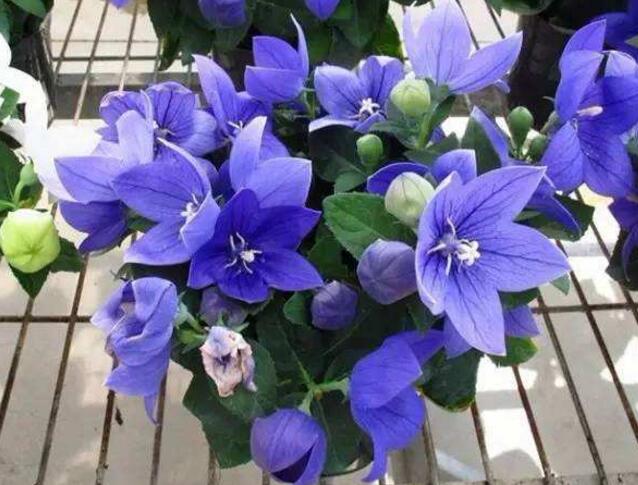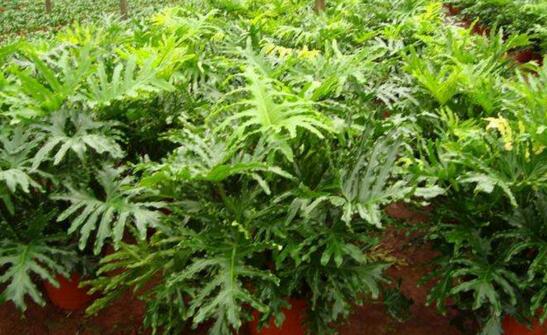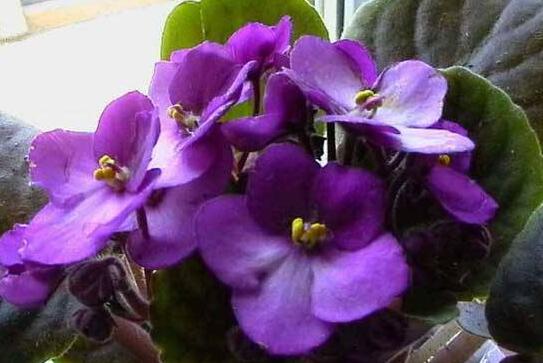How to raise Platycodon grandiflorum in pot, the breeding methods and precautions / sufficient light of Platycodon grandiflorum
Platycodon grandiflorum is a kind of flower planted all over the world. It has a high ornamental value. It is a good choice to cultivate a plant at home for decoration. How to raise potted platycodon grandiflorum, platycodon grandiflorum cultivation methods and precautions what? The following small series takes everyone to understand.
1. How to raise potted platycodon grandiflorum/sufficient light

How to raise potted platycodon grandiflorum, there are many problems to pay attention to. Platycodon grandiflorum is a light-loving plant, so light is indispensable in the process of cultivation. Of course, in addition to this, soil and watering need attention. The cultivation methods and precautions for Platycodon grandiflorum are explained in detail below, and we will continue to look at them.
II. Cultivation methods and precautions of Platycodon grandiflorum
1. soil selection
Among the cultivation methods and precautions of Platycodon grandiflorum, the selection of soil is a relatively important part. We had better choose loose soil, so that the drainage will be better and Platycodon grandiflorum can absorb nutrients better.
2. environmental requirements
In the process of culture platycodon grandiflorum, choosing a suitable environment is more conducive to its growth. It is best to keep it in a ventilated environment, and the ambient temperature is kept at about 15-22°C for the best, this point we should pay attention to oh.
3. watering requirement
Water is essential to the growth of plants, Platycodon grandiflorum is no exception, in the spring and autumn weather is more appropriate when you can choose 3-4 days of watering, in the summer weather is hot, water will evaporate faster, we need to increase the frequency of watering, generally need watering every day.
4. lighting requirements
Platycodon grandiflorum is a kind of light-loving plant. It can be cultivated outdoors for a long time in spring and autumn. When the sunshine is too strong in summer, it can be moved to indoor semi-shade for cultivation, but it must be ventilated.
5. pest control
In the breeding process of Platycodon grandiflorum, if it is not properly maintained, it is easy for pests and diseases to enter. At this time, we need to control according to different pests and diseases. For specific methods, you can refer to the article on pest control of Platycodon grandiflorum. Here, Xiaobian will not introduce too much.
How to raise eugenol? Culture methods and precautions of Eustoma grandiflorum
Platycodon grandiflorum is rich in color, elegant in plant state and fresh in color. It can be used to decorate indoor, windowsill or balcony with fresh and elegant feeling. Platycodon grandiflorum is a perennial plant that blooms every year as long as it is properly maintained. So, how should the eugenol be raised? The following is an introduction to the cultivation methods and precautions of eugenol:
Photo: Eustoma grandiflorum
1. Cultivation method of Eustoma grandiflorum
1. temperature
The suitable growth temperature of Eustoma grandiflorum is 15℃-28℃, which can endure the low temperature of 0℃ for a short time. The temperature at night during the growth period cannot be lower than 12℃. If the temperature is lower than 5℃ in winter, the leaf cluster of Eustoma grandiflorum will become rosette and cannot bloom. If the temperature is higher than 30℃ in summer, the flowering time of Eustoma grandiflorum will be shortened.
2. watering
Eugenium grandiflorum likes wet environment, but too much water will damage the root of eugenium grandiflorum, easy to disease, too little water will make the growth of plants weakened, flowering ahead of time.
So water should be appropriate, not excessive watering.
3. illumination
Platycodon grandiflorum prefers warm, well-lit environments, and long-term light helps stem and flower bud growth, so it is best to maintain 16 hours of light per day.
4. soil
Platycodon grandiflorum likes fertile loose, good drainage soil, the best choice to join peat soil, rice chaff and a small amount of lime and other improved garden soil.
Photo: Eustoma grandiflorum
Second, the precautions for the cultivation of eugenol
1. Drip irrigation
Eustoma grandiflorum has strict requirements for water. Too much water will damage the roots, and too little will lead to weak growth of stems and leaves. Therefore, it is best to use drip irrigation to irrigate, which is most beneficial to the growth of Eustoma grandiflorum.
2. The basin soil should be disinfected
If you want to pot eustoma, then the substrate used needs to be treated with high temperature steam or methyl bromide for disinfection, and the pH of the soil should be maintained at 6.5-7.0.
3. Avoid high temperatures and humidity
After bud formation, it is necessary to avoid high temperature and humidity environment, otherwise it is easy to cause fungal diseases.
4. Control fertilizer application
Before planting eugenol, manure and bone meal should be added to the soil as base fertilizer, because eugenol has a large demand for fertilizer, so topdressing should be applied in time during growth.
How to raise the cultivation method of eugenol
Platycodon grandiflorum is rich in color, fresh and elegant in color, and is commonly used in potted culture to decorate the balcony or windowsill of the room. How do you raise the eustoma? Next, Xiao Qi will share the cultivation method of Eustoma grandiflorum.
1. How to raise eugenol
The ecological conditions of the origin of Eustoma grandiflorum are dry environment with annual rainfall of 300~800mm, so Eustoma grandiflorum should avoid waterlogging. A period of low temperature before flowering, usually in summer. Seedling in autumn and winter, planting in February ~ March, flowering in June ~ July; sowing in July, planting in autumn, flowering in April ~ June of the following year. Temperature is an important factor affecting the growth and development of Eustoma grandiflorum.
There are many varieties of Eustoma grandiflorum, there are about hundreds of varieties, according to the color points are white, pink, yellow, rose, purple, etc., according to the flower shape points are cup, bell, funnel, etc., according to the petals points have single petals, double petals, etc., according to the growth period points have early, late, middle and so on.
II. Cultivation method of Eustoma grandiflorum
1. Light: Eustoma grandiflorum is sensitive to light, and long days will promote the growth of its stems and leaves and the formation of flower buds. Generally, 16 hours of light per day is the best. During winter and early spring, pay special attention to supplementary light, usually 2 to 4 hours at night.
2. Temperature: The suitable temperature for the growth of Eustoma grandiflorum is 20~24℃ during the day and 16~18℃ at night. Its growth rate, such as the elongation of internodes, the speed of flower bud differentiation and the length of harvest period, are easily affected by temperature. Especially in the emergence stage, high temperature will lead to reduced flower number, excessive internode length, weak pedicel, low quality; but if the temperature is too low, growth will be slow or even no flowering.
3. Fertilization: Platycodon grandiflorum belongs to plants with high fertilizer requirements. If the base fertilizer is not enough, topdressing is very important. In the middle and late stages of growth, if the stem is easy to break, or there is a phenomenon of stem longitudinal crack, it may be caused by boron deficiency. Spraying plants with a dilute solution of boric acid can improve this phenomenon.
4. Watering: Eustoma grandiflorum has strict requirements for water. Too much water will cause poor root growth and easy infection of diseases; too little water will make the stems and leaves weak and bloom early. The medium should be kept moist for one month after transplantation. Drip irrigation can be used to control moisture, especially after bud formation. High temperature and high humidity growth environment should be avoided as much as possible.
5. Diseases and insect pests: Common diseases of Eustoma grandiflorum mainly include blight, gray mold, sclerotinia sclerotiorum, etc. In addition to pulling out diseased plants, removing diseased leaves and diseased flowers in time, applying anti-kuning, Wanmeiling, mancozeb and other chemicals for prevention and treatment, ventilation should be strengthened at ordinary times to reduce air humidity.
The above is an introduction to the cultivation method of eugenol, I believe that after reading it, it will be more clear how to cultivate eugenol.
- Prev

Prevention and control of spring feather leaf rot, control of watering / fertilization / diseases and insect pests
When planting spring feathers, the yellowing of leaves is a headache, and in addition, leaf decay is also distressing. rotten leaves not only affect beauty but also indicate health problems in spring feathers. today, we will introduce the prevention and control methods of spring feather leaf rot.
- Next

How to raise violets, the culture methods and precautions / temperature of violets should be appropriate.
Many people know that violets have beautiful flowers, but there are still many functions of violets, such as whitening, skin care, heat-clearing and detoxification, so more and more people are going to plant several pots at home, but they don't know how to keep violets.
Related
- Fuxing push coffee new agricultural production and marketing class: lack of small-scale processing plants
- Jujube rice field leisure farm deep ploughing Yilan for five years to create a space for organic food and play
- Nongyu Farm-A trial of organic papaya for brave women with advanced technology
- Four points for attention in the prevention and control of diseases and insect pests of edible fungi
- How to add nutrient solution to Edible Fungi
- Is there any good way to control edible fungus mites?
- Open Inoculation Technology of Edible Fungi
- Is there any clever way to use fertilizer for edible fungus in winter?
- What agents are used to kill the pathogens of edible fungi in the mushroom shed?
- Rapid drying of Edible Fungi

